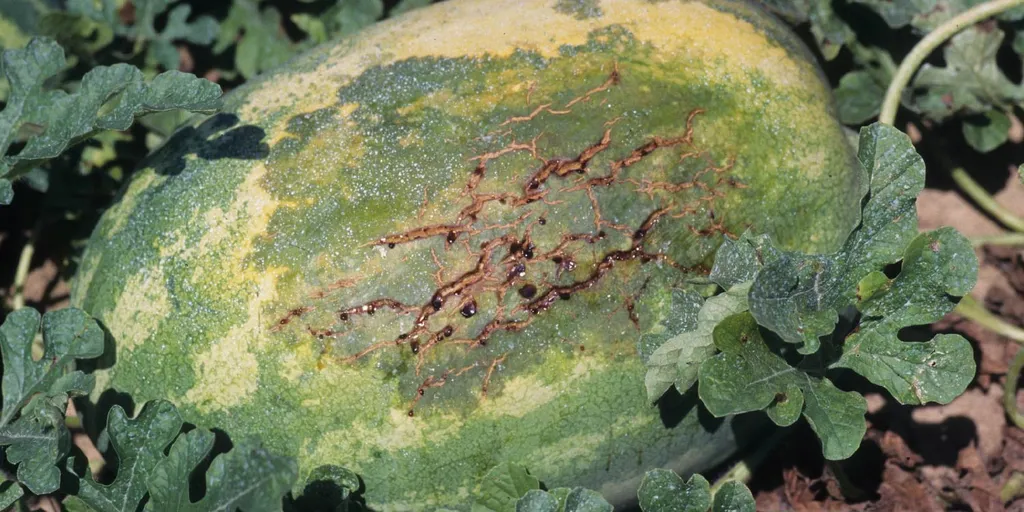In the ever-evolving landscape of agricultural technology, a groundbreaking study published in the journal ‘Applied Biological Chemistry’ (translated from Chinese as ‘应用生物化学’) has unveiled a promising approach to combat watermelon blotch disease, a significant threat to the watermelon industry. The research, led by Abitha Benson from the Department of Biotechnology at Karpaga Vinayaga College of Engineering and Technology, explores the potential of co-aggregated Azospirillum and Methylobacterium cells as a biocontrol agent.
Watermelon blotch disease, caused by the bacterium Acidovorax citrulli, can lead to substantial yield losses and economic damage. Traditional chemical controls have proven ineffective and environmentally harmful, driving the need for innovative, sustainable solutions. Benson’s research introduces a novel method that not only enhances plant growth but also manages disease incidence effectively.
The study found that co-aggregated Azospirillum sp. (CW903) and Methylobacterium sp. (CBMB110) cells significantly improved survivability in watermelon soil. “The co-aggregated form of these bacteria outperformed individual strains, demonstrating a synergistic effect that enhanced their biocontrol potential,” Benson explained. This co-inoculation approach reduced the number of Acidovorax citrulli on watermelon leaves and lowered lesion areas by 42%, a remarkable improvement over existing methods.
The research delved into various physiological and biochemical parameters, revealing significant decreases in phenol concentration, ethylene emission, and trans-cinnamic acid levels. Additionally, the study observed reductions in electrolyte leakage, H₂O₂ concentration, β-1,3-glucanase activity, phenylalanine ammonia-lyase (PAL) activity, peroxidase (POD), and polyphenol oxidase (PPO) activity. These findings suggest that the co-aggregated cells enhance disease suppression efficiency, reducing the severity of seedling blight by 21% and leaf spot by 35%.
The implications of this research are far-reaching for the agricultural sector. As the demand for sustainable and eco-friendly farming practices grows, the use of microbial inoculants like co-aggregated Azospirillum and Methylobacterium cells offers a viable alternative to chemical pesticides. “This approach not only mitigates disease but also promotes plant growth, aligning with the global shift towards sustainable agriculture,” Benson noted.
The study’s findings could revolutionize disease management in watermelon cultivation, providing farmers with a cost-effective and environmentally friendly solution. As the agricultural industry continues to seek innovative ways to enhance crop yield and quality, this research paves the way for future developments in biocontrol technologies.
In the broader context, the success of co-aggregated microbial inoculants in combating watermelon blotch disease highlights the potential of similar approaches for other crops. This could lead to a paradigm shift in agricultural practices, emphasizing the use of beneficial microorganisms to enhance plant health and productivity. As the world grapples with the challenges of climate change and food security, such advancements are crucial in ensuring sustainable and resilient agricultural systems.
The research published in ‘Applied Biological Chemistry’ marks a significant step forward in the field of agritech, offering hope for a future where sustainable and effective disease management is within reach. As the agricultural industry continues to evolve, the insights gained from this study will undoubtedly shape the development of new technologies and practices, benefiting farmers and consumers alike.

